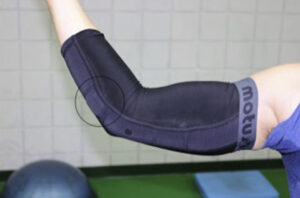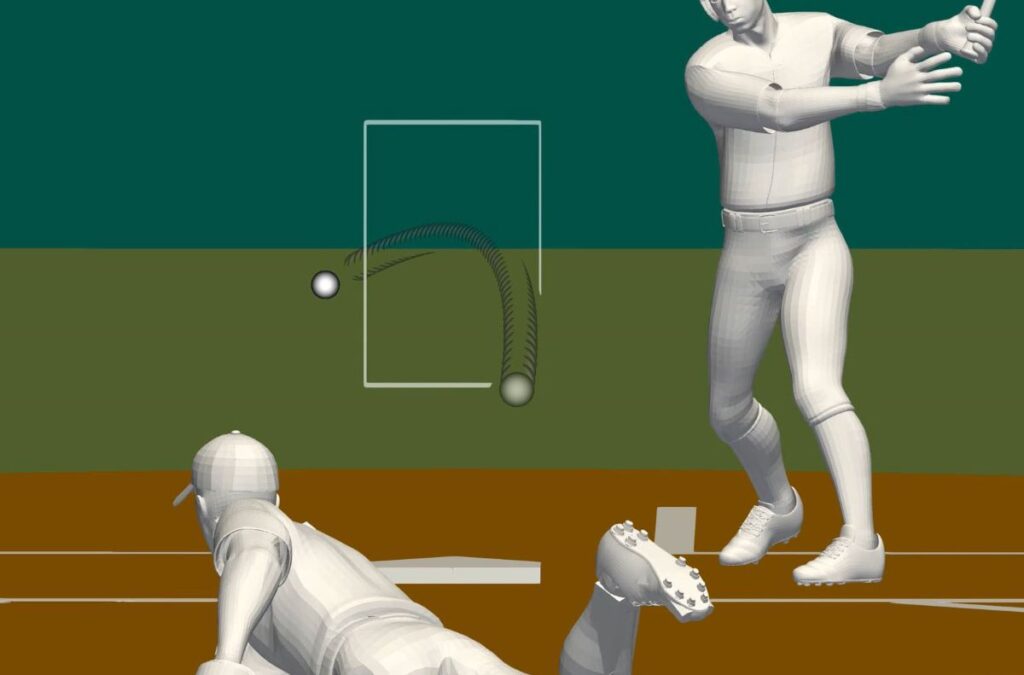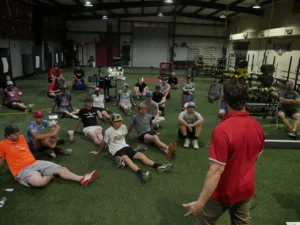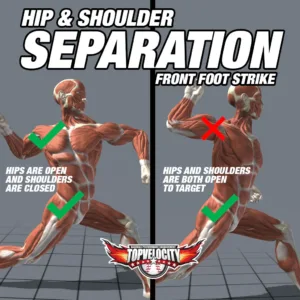 Baseball, renowned for its exhilarating combination of power and precision when it comes to Fastballs vs. Offspeed Pitches, truly comes alive in the art of pitching. Within the diverse arsenal of pitches available to a pitcher, the fastball and the offspeed pitches, including curveballs and change-ups, stand out for their predominant use and strategic importance in games. Each type of pitch not only serves a unique strategic purpose but also affects the pitcher's body in distinct ways. Fastballs, typically thrown with maximum force, test the limits of a pitcher's speed and strength, while offspeed pitches, which include the slower curveballs and deceptive change-ups, require finely tuned mechanics and precision.
Baseball, renowned for its exhilarating combination of power and precision when it comes to Fastballs vs. Offspeed Pitches, truly comes alive in the art of pitching. Within the diverse arsenal of pitches available to a pitcher, the fastball and the offspeed pitches, including curveballs and change-ups, stand out for their predominant use and strategic importance in games. Each type of pitch not only serves a unique strategic purpose but also affects the pitcher's body in distinct ways. Fastballs, typically thrown with maximum force, test the limits of a pitcher's speed and strength, while offspeed pitches, which include the slower curveballs and deceptive change-ups, require finely tuned mechanics and precision.
These pitches place significant physical demands on a pitcher's body, particularly in terms of how they affect the stress the elbow experiences. This stress, often measured in terms of elbow torque, varies significantly between pitch types due to the different biomechanics involved in their execution. In this detailed exploration, we aim to dissect the biomechanical implications of each pitch type. We'll examine how the forces exerted by fastballs compare to those of offspeed pitches and discuss the potential long-term effects on a pitcher’s arm health. Understanding these dynamics is crucial for developing effective training and injury prevention strategies tailored to protect pitchers throughout their careers.
Understanding Elbow Torque in Pitching: Fastballs vs. Offspeed Pitches
Elbow torque plays a pivotal role in understanding the physical demands and injury risks faced by baseball pitchers. This torque, essentially the rotational force applied to the elbow joint during a pitch, can significantly influence a pitcher's career longevity and susceptibility to injury. The degree of torque can vary widely depending on the type of pitch being thrown, with fastballs generally producing higher torque compared to offspeed pitches like curveballs and change-ups. This variance is crucial because it directly impacts the stress placed on a pitcher's arm, which in turn can affect both performance and the risk of developing elbow-related injuries over time.
Advanced Techniques for Measuring Elbow Torque: Fastballs vs. Offspeed Pitches
 In recent years, the precision in measuring elbow torque has greatly improved with the advent of sophisticated wearable technology. These devices are equipped with advanced sensors that capture detailed biomechanical data in real-time during the pitching process. Key parameters measured include not only the elbow torque but also the arm speed, arm slot, and shoulder rotation. Each of these factors contributes to a comprehensive understanding of the pitcher's mechanics and the stresses involved.
In recent years, the precision in measuring elbow torque has greatly improved with the advent of sophisticated wearable technology. These devices are equipped with advanced sensors that capture detailed biomechanical data in real-time during the pitching process. Key parameters measured include not only the elbow torque but also the arm speed, arm slot, and shoulder rotation. Each of these factors contributes to a comprehensive understanding of the pitcher's mechanics and the stresses involved.
These tools are invaluable in the sports science field, providing data that helps coaches, trainers, and medical professionals monitor pitchers more effectively. By analyzing this data, specialists can identify potential red flags in pitching mechanics or stress patterns that may predispose pitchers to injuries. Additionally, the insights gained from continuous monitoring can guide personalized training programs and interventions designed to enhance performance while minimizing the risk of injury. The ability to measure these forces with such precision marks a significant advancement in both the science of sports performance and injury prevention strategies.
Comparative Analysis of Pitch Types: Fastballs vs. Offspeed Pitches

Makhni, E. C., Lizzio, V. A., Meta, F., Stephens, J. P., Okoroha, K. R., & Moutzouros, V. (2018). Assessment of elbow torque and other parameters during the pitching motion: comparison of fastball, curveball, and change-up. Arthroscopy: The Journal of Arthroscopic & Related Surgery, 34(3), 816-822.
Fastballs: High Velocity, High Torque
Fastballs, often the quintessential element of a pitcher’s repertoire, are characterized by their high velocity and correspondingly high torque. Thrown with maximal force, these pitches demand a lot from the pitcher's arm, particularly exerting significant stress on the medial aspect of the elbow. This intense force is due to the mechanics of the pitch, which require a rapid extension of the arm and a powerful snap from the elbow to generate speed. As such, fastballs are not only a test of a pitcher’s power but also their endurance, as the repetitive stress can contribute to wear and tear on the elbow joint over time.
Offspeed Pitches: Strategy Over Speed
In contrast to the sheer force of fastballs, offspeed pitches like curveballs and change-ups rely more on deception and strategy. These pitches are thrown with a different set of mechanics that generally produce lower arm speed and subsequently less torque on the elbow. This reduction in physical exertion makes them less taxing on the pitcher's arm, which can be advantageous over a long season. However, the complexity and the finesse required to effectively throw offspeed pitches demand a high level of skill and precision. Pitchers must master the subtle wrist and finger movements necessary to manipulate the ball’s trajectory and speed, challenging their technique and control. The strategic nature of these pitches often makes them crucial in disrupting the timing and confidence of the batter, illustrating a different aspect of pitching prowess that contrasts sharply with the brute force of fastballs.
In summary, while fastballs dominate with speed and power, offspeed pitches control the game with guile and precision. Both types of pitches have their unique demands and place different types of stress on a pitcher's arm, shaping how pitchers develop and manage their skills throughout their careers. Understanding these differences is crucial for developing effective pitching strategies and training programs that can help minimize injury risks while maximizing performance on the mound.
Impact of Pitch Type on Pitching Biomechanics: Fastballs vs. Offspeed Pitches
 The science of pitching biomechanics is multifaceted, shaped by a pitcher's technique, the specific pitch being thrown, and individual physical attributes. The way a pitcher moves their arm and body to deliver different types of pitches can significantly affect the stress distribution across the elbow joint, highlighting the complex interplay between biomechanics and pitch selection.
The science of pitching biomechanics is multifaceted, shaped by a pitcher's technique, the specific pitch being thrown, and individual physical attributes. The way a pitcher moves their arm and body to deliver different types of pitches can significantly affect the stress distribution across the elbow joint, highlighting the complex interplay between biomechanics and pitch selection.
Differences in Elbow Torque
Fastballs, known for their speed and power, generally create the highest torque on the medial elbow. This increased torque can elevate the risk of injuries such as ulnar collateral ligament (UCL) tears if pitchers do not employ proper techniques and allow adequate rest between pitching sessions. The high-velocity snap of the elbow that is crucial for generating fastball speed is a major factor in this increased torque and potential for injury.
In contrast, offspeed pitches, which include curveballs and change-ups, typically generate less elbow torque due to their differing mechanics that emphasize pitch manipulation over sheer velocity. These pitches require precise control of the arm's motion and grip on the ball, resulting in a different biomechanical load on the elbow that is generally less taxing in terms of immediate stress but still requires meticulous technique to avoid cumulative injuries.
Technological Advances in Measuring Pitching Stress
Recent technological advancements have significantly improved the ability to measure and analyze the biomechanical stresses involved in pitching. Wearable devices equipped with gyroscopic sensors and accelerometers have become invaluable in sports science, offering detailed, real-time insights into the mechanics of a pitcher's arm during a throw. These devices capture data on elbow torque, arm speed, and the angle of arm and shoulder rotation, providing a comprehensive profile of the biomechanical forces at work during each pitch.
This technology allows for a more nuanced understanding of how different pitches affect the body, facilitating better injury prevention strategies and helping refine pitching techniques to be both effective and safer for the pitcher's long-term health.
Practical Applications in Training and Injury Prevention
Understanding the varying impacts of different pitch types on elbow stress is crucial for developing effective training programs. Armed with detailed biomechanical data, coaches and trainers can design practice sessions that balance the demands of performance with the necessity of safety. For instance, limiting the number of high-torque pitches in a session, focusing on strengthening exercises for the arm and shoulder, and incorporating adequate rest can all help mitigate injury risks.
Training regimens can also be tailored to the individual characteristics of each pitcher, taking into account their physical strengths and vulnerabilities. This personalized approach not only enhances performance but also minimizes the risk of overuse injuries, potentially extending a pitcher's career and enhancing their effectiveness on the mound.
By leveraging biomechanical insights and technological advances, the modern approach to training and injury prevention in baseball is more informed and effective than ever, paving the way for healthier, longer-lasting athletic careers for pitchers.
MLB Initiates Comprehensive Study on The Sweeper

Major League Baseball is taking proactive steps to understand and mitigate the increasing incidence of pitching injuries, as detailed in a report by Ken Rosenthal and Eno Sarris of The Athletic. The league has embarked on an extensive study involving "approximately" 100 interviews with a diverse group of subjects, including medical experts and former pitchers. Upon completion of this research, MLB plans to establish a "task force" tasked with analyzing the findings and making recommendations to enhance pitcher safety across the league.
Though the exact influence and authority of this task force remain unclear, its primary role is expected to be advisory, providing insights and suggestions to MLB teams and their pitchers based on the study's outcomes.
One significant aspect of the study is the focus on specific pitches that may contribute to arm injuries. Dr. Keith Meister, the head physician for the Texas Rangers, has pinpointed two particular pitches: the sweeper and the hard changeup. According to Dr. Meister, these pitches are linked with a higher risk of injuries. "We have all this data on performance and health," Meister explained to The Athletic. "We need to combine these metrics. It's not about banning the sweeper or hard changeup entirely, but recognizing and moderating their use when we see them contributing to increased injury risks."
The sweeper, a pitch that emphasizes horizontal movement and often velocity, has become increasingly popular in the majors. It's viewed as a modern iteration of the slider, refined through advanced analytics to maximize effectiveness against hitters. "The sweeper is just the latest example of weaponized analytics," noted Mike Axisa in April 2022. "It has been around for decades, but only recently have teams mastered its application."
However, despite the theories proposed by Dr. Meister, Rosenthal and Sarris reported that they could not locate concrete evidence directly linking the sweeper and hard changeup to the surge in injuries. This lack of definitive proof highlights the complexity of attributing injuries to specific pitches. Nonetheless, MLB's data suggests an uptick in pitcher injuries compared to the last decade, underscoring the importance of the ongoing study and subsequent recommendations by the forthcoming task force.
This initiative by MLB reflects a broader commitment to enhancing player health and safety by leveraging detailed analytical data to inform and refine pitching practices, aiming to reduce the prevalence of injuries and extend the careers of pitchers across the league.
Enhancing Fastball Mechanics and Injury Prevention at the 3X Velocity Camp
For pitchers aiming to elevate their game and harness the power of an elite fastball, attending the 3X Velocity Camp offers a transformative experience. This specialized camp is designed to not only refine a pitcher's fastball mechanics but also to integrate crucial practices for injury prevention, ensuring a balanced approach to developing pitching prowess.
 Developing Elite Fastball Mechanics
Developing Elite Fastball Mechanics
At the core of the 3X Velocity Camp, the focus is on mastering fastball mechanics that maximize velocity while maintaining accuracy. The camp employs a scientific approach, using high-speed video analysis to break down each pitcher's mechanics in minute detail. This allows coaches and participants to identify specific areas for improvement, such as arm angle, leg drive, and torso rotation, which are critical for generating speed and power effectively.
Participants undergo a series of drills and exercises tailored to enhance their kinetic chain — the sequence of movements that occur during a pitch. By optimizing the kinetic chain, pitchers can increase their fastball velocity without compromising their body's mechanics. The camp's structured regimen also emphasizes the synchronization of movements from the legs, hips, and shoulders, culminating in a powerful and efficient pitching motion.
 Injury Prevention Techniques
Injury Prevention Techniques
Understanding that high velocities can often lead to increased stress on the arm, the 3X Velocity Camp dedicates a significant portion of its curriculum to injury prevention. This includes training in proper warm-up routines, strength and conditioning exercises, and recovery protocols designed to fortify the arm against the rigors of frequent pitching.
One key aspect of injury prevention taught at the camp is the development of proper pitching mechanics that naturally reduce stress on the arm. Instructors focus on teaching techniques that distribute the force of the pitch across larger muscle groups, such as the legs and core, rather than isolating the arm and shoulder. This approach not only enhances overall performance but also minimizes the risk of overuse injuries.
Additionally, the camp incorporates education on the signs of potential injuries and how to respond to them. Pitchers learn to listen to their bodies and recognize early symptoms of strain, such as persistent soreness or changes in pitching mechanics. This proactive awareness is crucial for long-term health and career longevity.
Customized Training Plans
 Each participant receives a personalized training plan developed through the initial assessments conducted at the beginning of the camp. These plans are designed to target individual weaknesses and enhance strengths, allowing each pitcher to progress at their own pace and according to their specific needs.
Each participant receives a personalized training plan developed through the initial assessments conducted at the beginning of the camp. These plans are designed to target individual weaknesses and enhance strengths, allowing each pitcher to progress at their own pace and according to their specific needs.
By the end of the 3X Velocity Camp, pitchers not only improve their fastball mechanics but also gain a comprehensive understanding of how to maintain their body for peak performance and minimal injury risk. This holistic approach prepares them to compete at higher levels, with the physical and technical skills necessary to excel and persist in the demanding world of competitive baseball.
Learn more about the 3X Velocity Camp!
Conclusion: Fastballs vs. Offspeed Pitches
The study of elbow torque across different pitch types is vital for optimizing performance and preventing injuries in baseball. Fastballs, while being the most powerful, impose the highest torque on the elbow, whereas offspeed pitches allow for strategic gameplay with less physical toll. The use of advanced wearable technology plays a crucial role in monitoring and managing these forces, marking a significant step forward in sports science and athlete care.
Frequently Asked Questions: Fastballs vs. Offspeed Pitches
- What causes higher elbow torque in fastballs? Fastballs involve high velocity and arm speed, which significantly increase the rotational forces on the elbow.
- Are offspeed pitches safer for young pitchers? Generally, offspeed pitches are considered safer due to lower elbow torque, but proper technique is essential to avoid other types of injuries.
- How does technology help in managing pitcher health? Wearable sensors provide precise data on pitching mechanics, helping coaches make informed decisions about training and rest periods.
- Can elbow torque measurements predict injuries? While not predictive, high torque readings can indicate increased risk, allowing for proactive management strategies.
- Is it possible to reduce elbow torque while pitching fastballs? Adjustments in technique and mechanics can help distribute forces more evenly, potentially reducing torque.
For more exclusive content visit TopVelocity Patreon!


 Developing Elite Fastball Mechanics
Developing Elite Fastball Mechanics Injury Prevention Techniques
Injury Prevention Techniques

